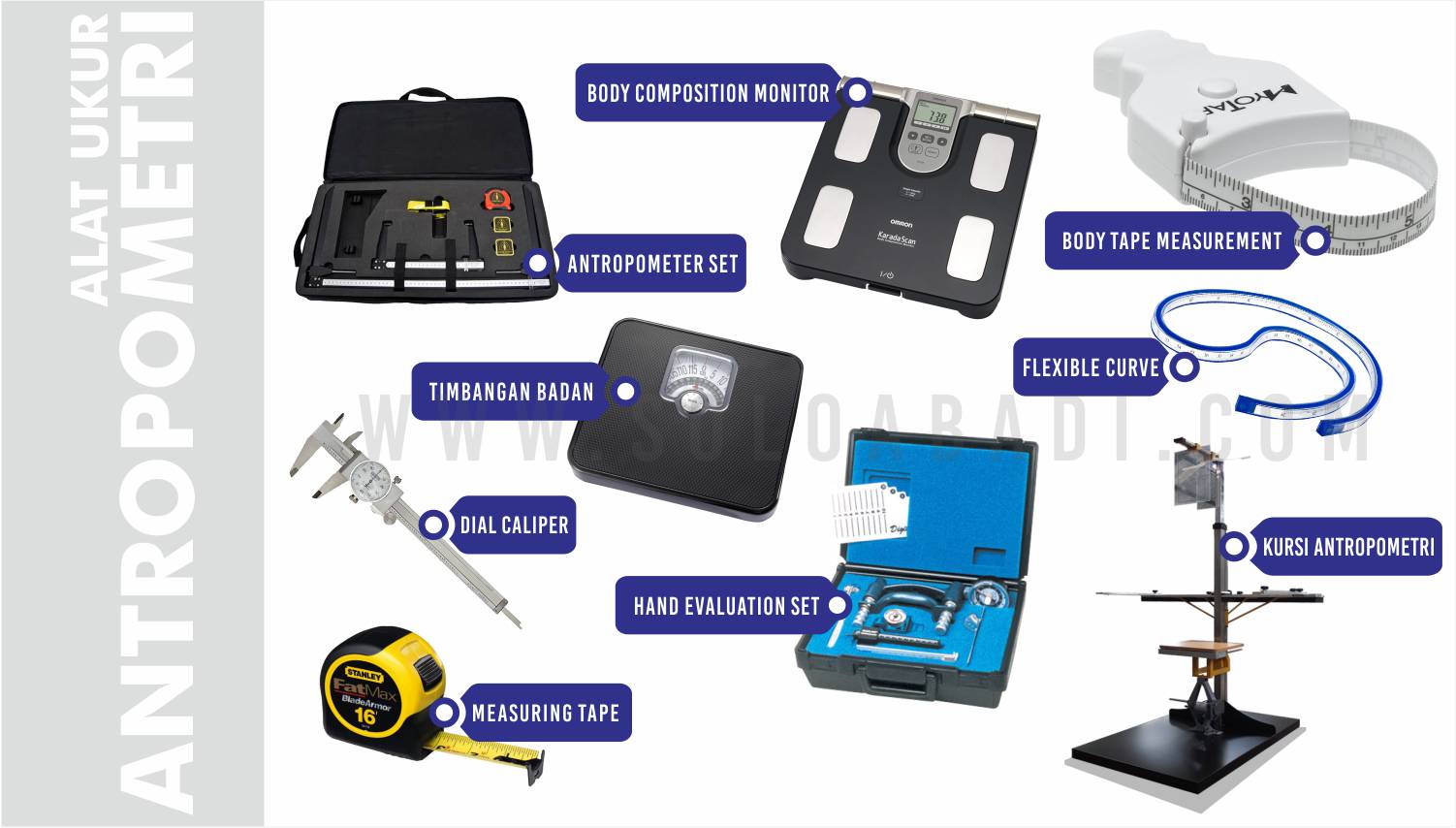The development of ergonomics laboratories is inseparable from advances in ergonomics and anthropometric advances in Indonesia. The interests of the ergonomics laboratory itself are widely used as learning media for industrial engineering students and product design throughout Indonesia, companies engaged in industry, as well as a registration system in several government institutions. Therefore, laboratory equipment is also something that is required in its existence to meet ergonomic principles.
In this ergonomics laboratory, users will be more familiar with and know the concepts of ergonomics. Of course it is also supported by qualified laboratory equipment, making the reference for making products even more detailed. So it is not surprising if the times are growing, the greater the scope of the study in laboratory design procedures and increase the value of products in the application of ergonomics.
Some of the facilities available at the Ergonomics Laboratory
The following are explanations regarding the equipment that must be owned by the Ergonomics laboratory:
1. Anthropometry Measurement Tool

- Anthropometry set
Used to measure distance in a straight line of an object.
- Body composition monitor
Used to measure body fat percentage, body age, body metabolism when resting, and Body Mass (BMI).
- Scales
Used as a tool to measure body weight.
- Hand evaluation set
Used to evaluate the strength and range of hand and finger movements.
- Dial caliper
Used to measure cylinder whole diameters, distance around adjacent surfaces, and to measure depth.
- Flexible curve
Used to draw patterns, and count objects that have a flat surface.
- Measuring tape (meter)
Used to measure the size of a flat surface object.
- Body tape measurement (meter diameter)
Used to measure the circumference or diameter of an object.
Used to measure the dimensions of the human body by calculating using sitting and standing.
2. Biomechanics Work Measurement

- Electronic push / pull dynamometer
Used to find out the pulling force and push the arm and shoulder muscles.
- Hand grip dynamometer
Used to find out the power of holding hands.
- Electromyography
Used to determine nerve and muscle function by recording electrical activity produced by skeletal muscles.
- Force transducer
Electrical device test equipment that converts a force into an electrical signal.
3. Work Physiology Measurement Tool

- Stopwatch
Used to measure time.
- Heart rate monitor
Used to monitor / count one’s heart rate.
- Pulse monitor
To find out the object’s resistance to increased activity.
- Blood pressure monitor
Used to measure blood pressure on the wrist.
4. Physical Work Environment Measurement Tool

- 4-in-1 environment meter
Measuring instruments made from a combination of the functions of Sound Level Meters, Light Meters, Humidity Meters, and Temperature meters.
- Sound level meter
Used to measure the noise level of an environment.
- WBGT measurement
A tool for measuring the temperature of the air.
- Thermometer + Hygrometer
Used to measure temperature and humidity in a room.
- Wet & dry thermometer
Tools used to measure relative air humidity.
- Ear thermometer
Used as a body temperature gauge through the ear.
- Light Meter
Used to determine the level of light received by the camera before shooting.
- Inclinometer
Serves as a reading of ground movements (slope of land).
- PH meter
To measure pH (acidity or base) of an object.
- Climatic chamber
Used for stability testing to increase temperature
The importance of product details for user convenience
From the various explanations above we can draw the conclusion that basically measurement and detail dimensions are indeed very influential with customer satisfaction. By providing ergonomic laboratory equipment, it is expected that it will be easier to plan product design planning.
Customer comfort and satisfaction are believed to have an important role in determining product quality and customer comfort. Because basically it is very closely related between the determinant of quality and customer satisfaction.


